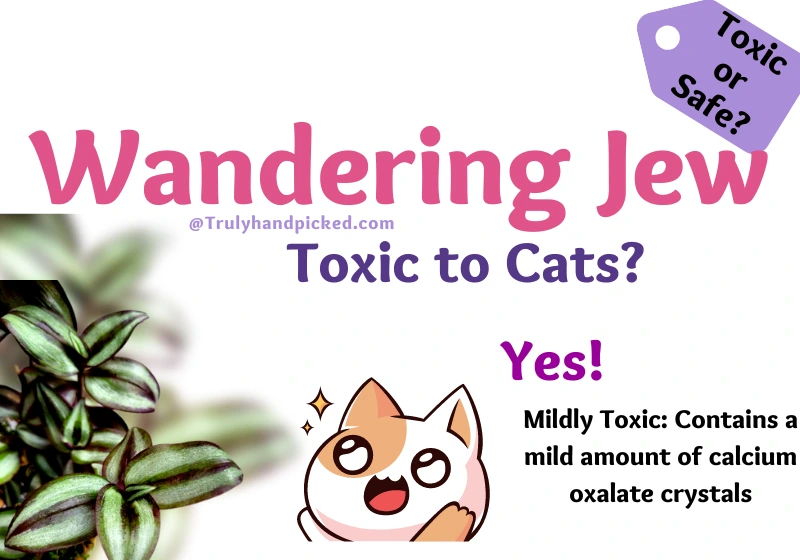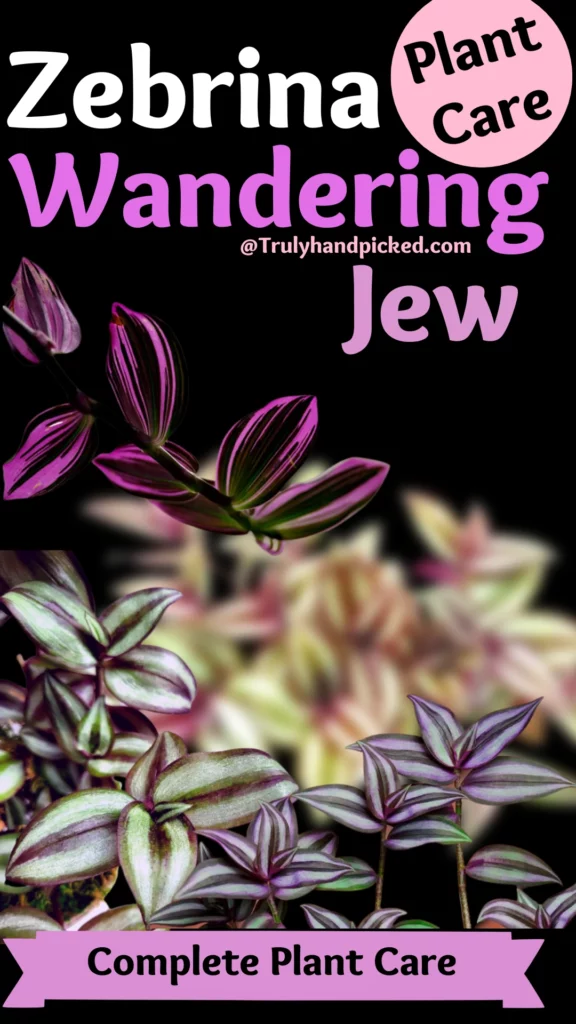Wandering Jew is the common name of ornamental plant tradescantia zebrina or zebrina pendula. This species includes plenty of other genera in its single category; and identifies as the inch plant in some countries.
It could be a wonderful houseplant due to its catchy resemblance and easy-to-care quality. Its purplish pattern foliage is another reason for bringing this plant to your house.
You can steal an exotic look for your balcony or corridor area by just hanging a decent planter of a wandering Jew plant. Here are some important facts you should know about this ornamental plant, before purchasing one for your home-

Wandering Jew Plant Care: Quick Tips
Wandering Jew can cultivate with moderate care and attention, with just a few basic growing needs. Its mere growing essentialities are, as follows-
- Plant it in slightly moist and well-drained soil, prepared with standard potting mix
- Plants have medium or average water requirements, so water it in every 7-10 days
- Let the soil dry a bit during watering and water it with ½ inch depth watering
- Make the soil fertile enough during the plantation with an organic fertilizer like compost
- Then, feed your plant twice a month with liquid fertilizer with a half-strength diluted form
- Repot the plant once it overgrows its current planter with a 1-2 inch bigger planter
- And prune the plant once the vining stems grow uncontrollably outside the planter
- One more thing you should remember about a growing wandering Jew plant is to treat the troubleshoot issues properly in time
- Pests’ problems, over or underwatering problems, insufficient fertilization, and inadequate light are some issues you must validate attentively to keep your plant healthy continually.

Wandering Jew Light Requirements:
Despite being an easy-to-care houseplant, a wandering Jew is quite picky about its light requirements. If you want to get the healthiest for the inch plant with absolutely flourishing leaves, then, try to fulfill its light requirements accurately. Some useful tips in this regard-
- Wandering jew/dude plant always prefer very bright indirect sunlight
- Try to keep your plant near a west or an east-facing window
- This way, your plant will get 6-8 hours of bright indirect light every day
- If you place it on a southern window, try to remove it a bit away during the afternoon
- Or apply any shade or curtain to keep the scorching heat away from the leaves
- And try to provide your plant with natural light rather than artificial light
You should keep in mind that too much direct light can burn the leaves of wandering Jew plants. On the other hand, too light or insufficient light can fade the color of their beautiful foliage affectedly.
How to Make Wandering Jew Bushy?
To make your wandering Jew bushier most naturally, follow these smart tricks assiduously-
- Select an ideal pot, that must be as bigger as 10-12 inch width
- Make the planting process flawless with the best potting soil mix
- Keep the watering course faultless and don’t forget to let the soil dry between watering
- Make sure the soil is well-drained
- You can prepare the soil mix with 50% of potting soil, 25% of cocopeat, and 25% vermicompost to make the growing medium perfect
- Prune or pinch your plant regularly, once they reach a normal bushy form
- This process will encourage the growing speed of your plant with a boost
- And don’t forget to validate your plant often to treat each troubleshooting issue, once you detect anything to your plant.

Are Wandering Jew Plants Toxic to Cats?
Fortunately, a wandering Jew is one of those plants, which consider mildly toxic to house pets including cats. Hence, it cannot turn life-threatening to your loving mouser. Sometimes, a cat may suffer tor from some mild health issues from consuming the sap of a wandering Jew plant.
You should remember here that the sap of this plant is more toxic to a cat than any other part. As the sap of a wandering Jew plant contains a mild amount of calcium oxalate crystals component in it. This is that property, which initiates the allergic reaction to your pets, while consumed in a certain amount.
Some common issues your little kitten or cat may face by gulping of wandering Jew plant, are-
- Skin irritation
- Bowel irritation
- Allergic skin reaction
- Skin rash like dermatitis
- Vomiting
- Diarrhea
- And other poisonous stomach issues
If you want to keep an inch plant and a cat in the same house, you must take a few smart initiatives to set them apart from each other. Such as-
- Try to hang the planter, where your naught cat couldn’t jump at
- Make sure that there is no nearby surface that your cat could use to reach the planter
- And always prune the long trailing vines, which droop near the ground from the planter
How to Propagate Wandering Jew:
The propagation is one of the easiest tasks you can do with this pretty ornamental plant. To do this expertly, simply follow these steps accordingly
Supplies You Will Need:
- A sterilized pruner
- Rooting hormone
- A clay-pot
- Some potting mix
- Perlite
- Organic compost
- Sprayer with distilled water
Youtube Video on Tradescantia Care and Propagation
How to Do It:
- Wait till the pruning session comes to cut off some healthy off shots during this time
- Now, find a healthy stem with a nod and 5-6 fresh leaves on it
- Remove 2-3 leaves from the bottom and dip the end part into the rooting hormone
- Mist the soil with the water and sow the cutting into the moist soil carefully
- Now, place the planter in a warm and highly humid place for a couple of weeks
- You will find that new shoots will sprout within 30-40 days, then, just provide the plant proper care to let it thrive abundantly.
Is Purple Heart Plant The Same As Wandering Jew?
Wandering Jew or inch plant is quite similar to look like a purple heart plant, due to their purplish foliage. however, they are totally different plants. Here are some apparent differences between these two, which will help you to decide how much dissimilar they are from each other-
- Wandering Jew plants belong to a completely different species from the purple hearts
- Purpleheart plants are quite fast-grower than the wandering Jew plants
- You cant get the same growing speed from a wandering Jew plant whether it is growing vertically or horizontally. While purple hear plants thrive best while growing as a groundcover
- Leaves of the purple heart grow in a greenish shade with a silvery stripe, but wandering Jew leaves are completely different from this and don’t have any metallic hue unlike purple hearts
- Wandering Jew plants produce pick rose flowers throughout the year unlike purpleheart plants
- Purpleheart plant can stand the full sun and direct sunlight while wandering Jew only prefers indirect sunlight with partial shade sun
- And last but not least point is that purpleheart is native to North America while wandering Jew is native to Mexico.
